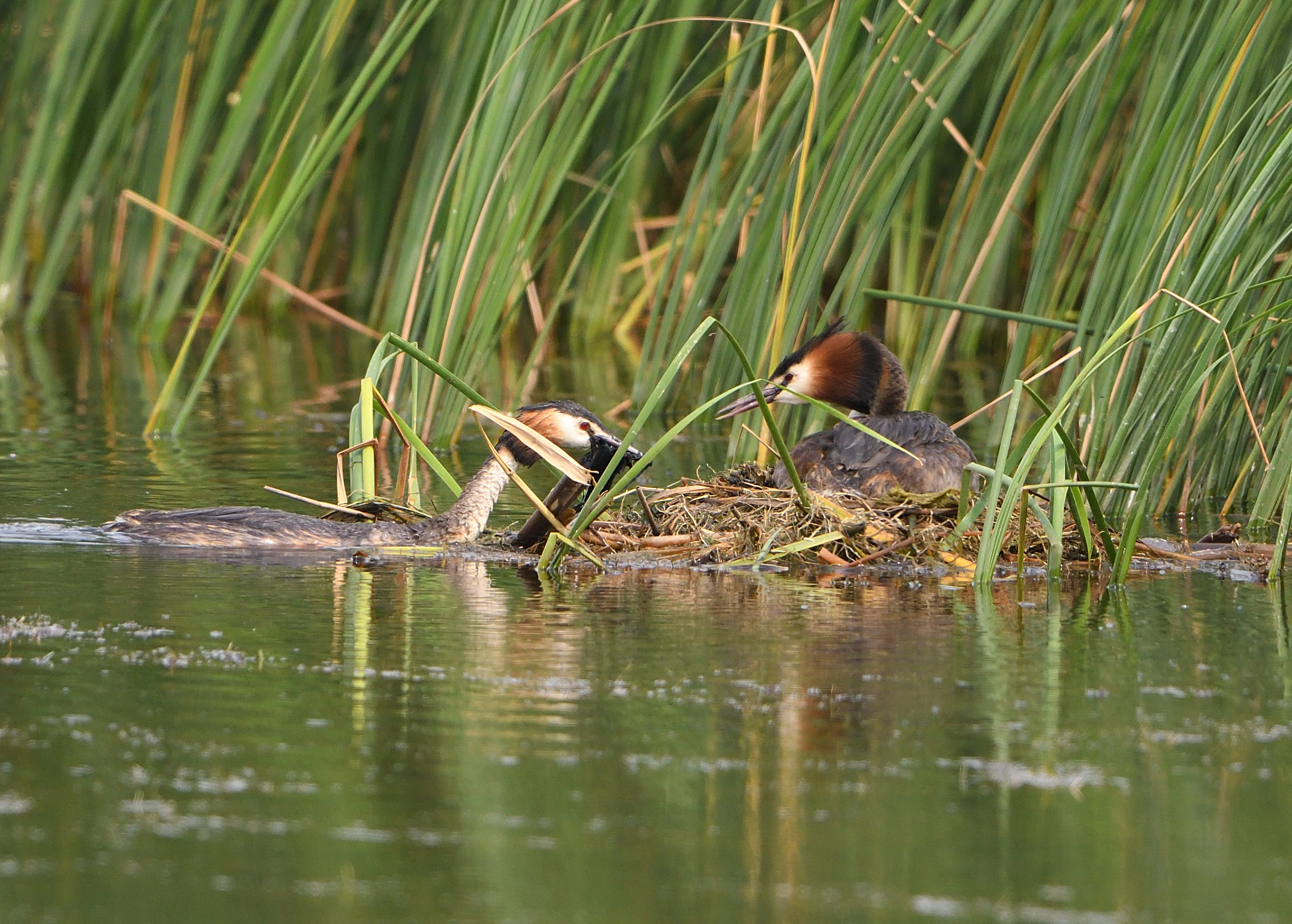Great Crested Grebe Family and Me!
The graceful Great Crested Grebe is a familiar sight on our lakes and reservoirs, and is well-known for its elaborate courtship dance, during which it rises vertically out of the water and shakes its head.
The largest and most often seen grebe, the great crested grebe has an impressive plume on its head and orange ruff around its neck during the breeding season. It has white cheeks, a dark cap, a white neck and a dark body.
Grebes are diving waterbirds, feeding on small fish and aquatic invertebrates. Great crested grebes nest on floating platforms made up of waterweed. They can be found on lakes and reservoirs everywhere.
I was recently fortunate to spend some time with an adult pair, who were busy building their nest. This was great news, as hopefully, over the following weeks, they would sucessfully breed and give me the opportunity to follow their progress.
The site of their original nest, was perfect and directly in front of my hide. However, over the next few days, some violent storms appeared and they soon decided that a better location was needed. Much to my frustration, the new location, was behind a reed bed and totally out of sight! - Oh well, I would just have to hope that they would stay in the area and at least give me some images and if the breeding was sucessful, I might get a glimpse of the youngsters in a few weeks.
Try as I might, which included 05.00am starts and up to 8 hour shifts, this couple were not going to 'perform' in front of my camera. They were happy to spend time together on the water, but simply refused to 'display!
A couple of weeks later, it soon became clear that eggs were on the nest, as the birds were now hunting individually, which meant that they were taking it in turn to sit on them. During this period, they needed to feed regularly, and the variety of type and size of fish, continued to surprise me!
The confirmation that chicks had hatched came within another few weeks, when the parents started catching much smaller fish and instead of eating them, they started to carry them back to the nest.....a sure sign that hungry mouths needed feeding!
Finally, the day came and I got my first glimpse of the youngsters, as both parents brought them out from the nest to introduce them to the big outside world. When you have invested so much time with your 'target', the experience of seeing them turn into a family, is an emotional and proud moment!
Over the next couple of weeks, I watched these chicks grow and become more independant. They both had very different personalities, with one becoming very adventurous, whilst the other stayed close to the parent. Whilst still relying on mum and dad for regular food, watching them begin to dive for their own meals was particularly gratifying.
Although they spent some of their time in the water, they were always happy to get a lift from mum.....




































Comments
Post a Comment